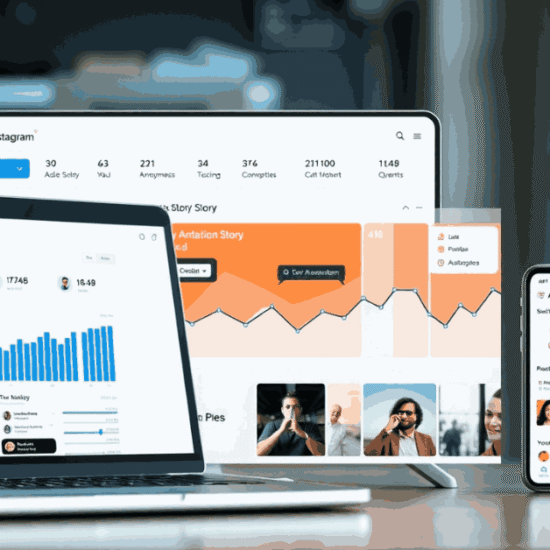Introduction
The uniting power of analytics and infrastructure today than ever before is in a more data-driven and AI-integrated world. And that is where it short Analytics and Technical Architecture- comes in. This framework is critical and it dictates the way in which organizations design their entities to enable insights, performance and scalability.
Applications designed in the cloud, data warehouses, machine learning coordination to single-screen dashboards, this is the roadmap to transforming data in its raw form into a smart move and making the infrastructure resilient, scalable, and secure.
You can be a CIO mapping out modernisation routes or you might be a data engineer tuning some ETL pipelines or you can be a tech strategist coordinating teams, but what you must know in 2025 is A&TA.This article explains the components, uses, tools, benefits and best practice of A&TA; the what, why and how of it.
What Is A&TA? A Simple Definition
A&TA is an abbreviation meaning Analytics and Technical Architecture, a strategic discipline that seems to combine the data analytics with scalable, resilient and optimized IT architecture.
Core Purpose:
To design data strategy appropriately so as to create an uninterrupted stream between the data ingestion and decision-making.
| Factor | Description |
| Analytics | Data modeling, dashboards, insights |
| Architecture | Infrastructure, security, tools |
Core Components: Analytics + Architecture at a Glance
Technical architecture and analytics are closely related, although they differ.
Key Components:
| Analytics | Technical Architecture |
| Data Collection & ETL | Cloud platforms (AWS, Azure, GCP) |
| Visualization (Power BI, Tableau) | APIs & Integration pipelines |
| Business Intelligence (BI) | Data lake/data warehouse implementation |
| Predictive Modeling (ML/AI) | Microservices, containerization (K8s) |
Good it means an AI model is not stalled by an old infrastructure-and it is not interrupted with a business unit that needs it the most.
Why A&TA Is Critical to Modern Enterprises
Organizations are currently dealing with multi-cloud environments involving petabytes of data. Unless supported by intelligent A&TA, growth results in disorder–not capacity.
More about why it is necessary to invest in A&TA:
- Higher ROI on investment on data.
- Scalability and uptime of the system are improved.
- Handling of emerging insights more quickly with less architectural bottlenecks.
- Efforts on tighter cybersecurity and compliance.
- IT business synergy.
A Gartner 2025 report indicates that 74 percent of executives believe that they have been hampered in their analytics processes in large part due to a poor architecture.It solves precisely that.
How A&TA Shapes Cloud Strategy and Data Governance
Cloud-first and hybrid-like not only require agreements with analytics.
A&TA and Cloud Strategy:
| Area | A&TA Impact |
| Data Lakehouse Setup | Determines storage tiers & partitioning for cost optimization |
| Serverless Query Engines | Enables acceleration of ad-hoc analytics |
| Decentralized Data Mesh | Architectural governance ensures scalability per domain |
| Cloud Security | IAM, encryption, compliance all baked into backbone |
A strong strategy ensures cloud elasticity doesn’t compromise consistency or insight delivery.
Key Tools and Technologies in the A&TA cosystem
Innovations in A&TA are driven by cutting-edge tools from major tech stacks, both open-source and commercial.
Popular Tools by Category:
| Function Area | Tools Used (2025) |
| Data Engineering | Apache Airflow, Fivetran, dbt |
| Cloud Infrastructure | AWS CDK, Terraform, Azure Bicep |
| Analytics & BI | Power BI, Looker, Tableau, ThoughtSpot |
| Machine Learning Ops | MLflow, SageMaker, Databricks |
| Monitoring & Observability | Grafana, NewRelic, Prometheus, ELK Stack |
Infographic Idea:
This is Tech Stackvisor(store to understanding) – Visualizing how tools communicate on the architecture and on the analytics.
Real-World Industry Use Cases of A&TA
Use Case 1: Healthcare Challenge:
- The outcome was 45% quicker treatment plan decisions and less repeat testing thanks to the integration of A&TA with FHIR-compliant data lakes and Power BI.
Use Case 2: Retail (eCommerce) Difficulty: Solution:
- Real-time dashboarding combined with event-driven architecture; outcome: 38% more effective personalization during major campaignsSector
| Sector | Application | Business Outcome |
| Logistics | Route optimization & ML | Fuel cost savings, ETA accuracy |
| Finance | Risk scoring through real-time BI | Regulatory compliance met faster |
| Manufacturing | Sensor-data analytics integration | Predictive MRO savings |
Comparing Traditional IT Architecture vs. Driven Design
Unlike legacy IT architectures, modern A&TA is modular, flexible and insight-based.
| Feature | Traditional IT Architecture | A&TA-Centered Design |
| Data Flow | Siloed, batch-based | Unified, real-time capable |
| Business Collaboration | Minimal | Integral to design |
| Analytics Readiness | Retrofitted later | Integrated from scratch |
| Scalability | Manual scaling | Elastic cloud native |
| Compliance | Bolt-on | Automated policy triggers |
Best Practices for Building A&TA Frameworks
Implementing should be cross-functional, iterative, and ongoingly assessed.
Top Techniques:
- Use case mapping should come first, not technology.
- Ensure that stakeholders in analytics and IT share ownership.
- Use CI/CD pipelines and data quality monitoring when building.
- Integrate governance and identity from the start.
- When feasible, use open standards (such as OpenMetadata and dbt).
This concepts can be applied across business divisions in a COE (Center of Excellence) model.
Emerging Trends in A&TA for 2025
Hyperautomation, zero-copy architecture, and AI-enabled observability will all be included into its growing universe by 2025.
| Trend | Description |
| Zero ETL Pipelines | Direct data from source systems to lakehouse without staging |
| AI-Generated Data Models | Auto-created metrics layers through LLMs |
| Ethics-first Analytics | Transparency in analytics code, fairness in model outputs |
| IoT Integration | Streaming analytics from edge devices into central arch |
| FinOps for A&TA | Real-time cost visibility to reduce cloud analytics spend |
Innovative companies are combining A&TA with explainability in genAI analytics, cross-border compliance, and ESG dashboards.
How to Start Implementing A&TA in Your Organization
Start with one important project if you’re new to A&TA rather than aiming for a monolith.
Step Starter Plan:
- Examine the current analytics maturity map. One Use Case with quantifiable potential impact
- Describe architecture. Working together (Data Engineering + DevOps)
- Choose as few viable toolkits as possible (keep it lean).
- Use A&TA Lenses to Train Teams (Dashboards ≠ analytics alone)
FAQs
What is the meaning of A&TA?
It refers to the integration of data analysis systems with contemporary IT frameworks, as well as analytics and technical architecture.
Is this exclusive to businesses at the enterprise level?
No, especially in SaaS companies, startups and SMBs are using scaled-down A&TA techniques more and more.
What positions are part of it?
Data architects, ML engineers, solutions architects, DevOps, BI developers, and CIOs are typical positions.
What was the most significant error in the adoption of A&TA?
It frequently backfires to build architecture in isolation and then attempts to add analytics later.
How frequently ought A&TA frameworks to be assessed?
Reviews are often conducted every three months to monitor performance, cost, and alignment with corporate goals.
Conclusion
A&TA is now a necessary skill for contemporary corporate success; it is no longer an option. These days, infrastructure must scale on demand, decisions must be made instantly, and data volumes are skyrocketing. It can help with that; it’s not only an IT problem.
Businesses can gain agility, visibility, and a competitive edge by investing in A&TA. The A&TA playbook is your hidden weapon whether you’re managing global cloud systems, enhancing business reporting, or implementing AI at scale.
Visit the rest of the site for more interesting and useful articles.




